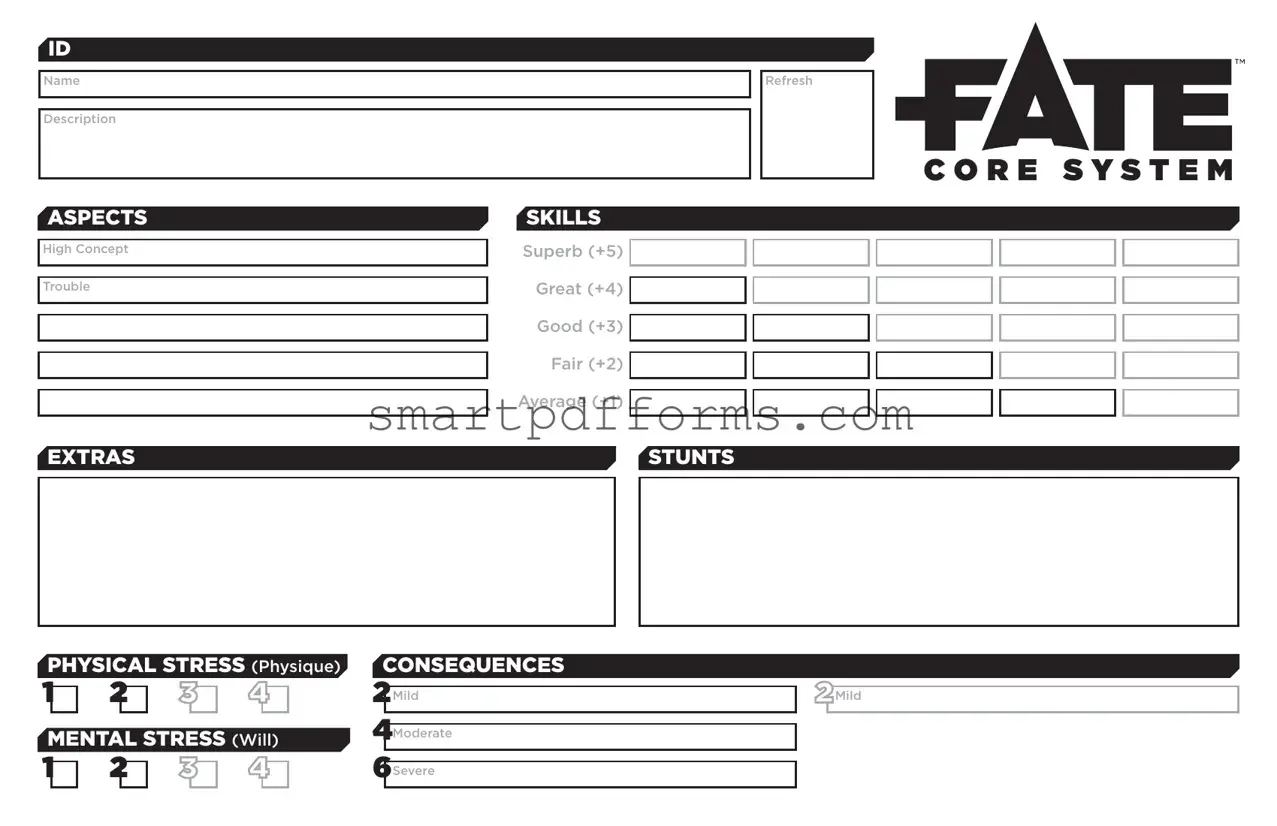What is the purpose of the Fate Character Sheet form?
The Fate Character Sheet form is designed to help players create and develop characters for role-playing games that use the Fate Core System. It organizes important character information, including aspects, skills, stunts, and stress tracks, in a clear and accessible way. This helps players keep track of their characters’ abilities, challenges, and progress throughout the game.
How do I determine my character's High Concept and Trouble in the Aspect section?
Your character's High Concept is a brief phrase that summarizes who your character is at their core, often including their profession or primary role in the story. Think about what makes your character unique. Trouble, on the other hand, is a phrase that describes a recurring complication or challenge they face. It's something that often gets them into interesting situations. To determine these, reflect on your character’s backstory, motivations, and the kinds of conflicts you're excited to explore.
Can you explain what "Refresh" stands for in the Extras section?
Refresh is a term used in the Fate Core System to represent the number of Fate Points a player starts with at the beginning of each game session. Fate Points allow players to influence the story by adding elements, taking extra actions, or improving rolls. A higher Refresh means your character starts with more Fate Points, which can give them an edge in crucial moments.
What are Stunts and how do they work?
Stunts are special abilities that allow characters to do things that others can't, providing an edge in specific situations. Each stunt gives your character a unique advantage, such as a bonus to a certain skill under specific conditions, a cool move no one else can do, or a way to bend the rules in your favor. They are designed to highlight your character’s expertise and quirks, adding depth and personal flair to gameplay.
How do I fill out the Skills section?
In the Skills section, you'll rank your character's abilities in tiers: Superb (+5) down to Average (+1). Start by choosing which skills your character excels in, assigning them to the highest tiers, and work your way down to less proficient skills. The distribution of skills at different levels helps define what your character is good at, ensuring a balanced character capable of facing various challenges.
What is the difference between Physical and Mental Stress?
Physical and Mental Stress tracks are used to represent a character's endurance against physical harm and mental or emotional fatigue, respectively. Physical Stress comes into play during physical confrontations or when dealing with physical obstacles, while Mental Stress is used during challenges that require mental effort, such as puzzles or emotional manipulation. By marking off stress boxes, you can keep track of your character’s condition and how close they are to being taken out of a scene due to exhaustion or injuries.



 2
2